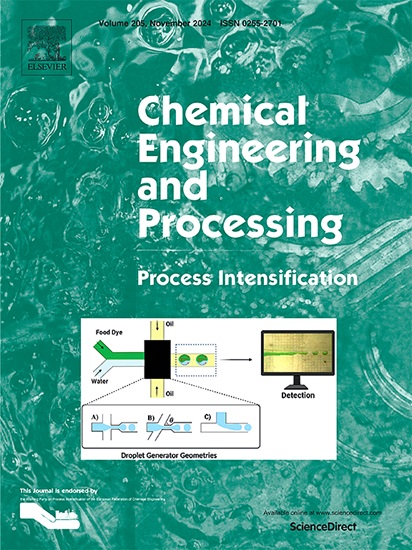An efficient heat-pump extractive distillation process for recovering lower alcohols from bioethanol fusel oil
IF 3.8
3区 工程技术
Q3 ENERGY & FUELS
Chemical Engineering and Processing - Process Intensification
Pub Date : 2025-03-28
DOI:10.1016/j.cep.2025.110291
引用次数: 0
Abstract
Fusel oil is a common mixture of several alcohols produced as a by-product of alcoholic fermentation. After removing the main ingredient (amyl alcohol), it also contains lower alcohols such as ethanol (EtOH), n-propanol (NPA) and isobutanol (IBA), each of which forms an azeotrope with water and has a similar boiling point. In order to efficient recover high purity products from the EtOH/NPA/IBA/water mixture, this article investigates different extractive distillation processes with heat pump in terms of economic, environment and thermodynamic properties. Firstly, 1,4-butanediol is screened as the best dehydration solvent based on the thermodynamic and molecular quantization analysis; Next, a conventional extractive distillation sequence (CED) is proposed and optimized using total annual costs (TAC) and CO2 emissions as dual objectives. Finally, introducing heat integration, vapor recompressed heat pump and bottom flash heat pump into the CED process, three energy-saving processes (i.e., HICED, DVRHPs-HICED and BFVRHPs-HICED) are designed. The results show that compared with the CED process, the DVRHPs-HICED process reduces TAC by 17.5 %, exergy loss by 42.2 %, and gas emissions (CO2, SO2, NOx) by 49.2 % while the BFVRHPs-HICED process reduce TAC by 17.8 %, exergy loss by 40.8 %, and gas emissions (CO2, SO2, NOx) by 48.5 %.

求助全文
约1分钟内获得全文
求助全文
来源期刊
CiteScore
7.80
自引率
9.30%
发文量
408
审稿时长
49 days
期刊介绍:
Chemical Engineering and Processing: Process Intensification is intended for practicing researchers in industry and academia, working in the field of Process Engineering and related to the subject of Process Intensification.Articles published in the Journal demonstrate how novel discoveries, developments and theories in the field of Process Engineering and in particular Process Intensification may be used for analysis and design of innovative equipment and processing methods with substantially improved sustainability, efficiency and environmental performance.

 求助内容:
求助内容: 应助结果提醒方式:
应助结果提醒方式:


